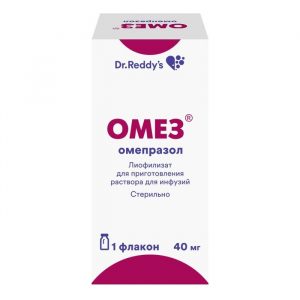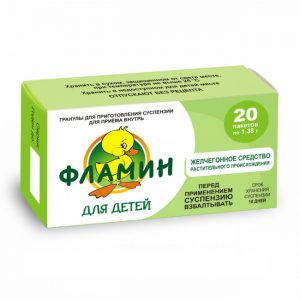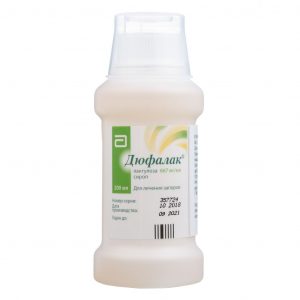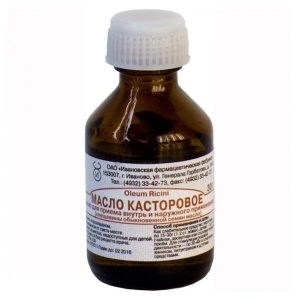Description
Latin name
Pentasa
release form
tablets
Packing
100 pcs.
Pharmacological action
Mesalazine – 5-aminosalicylic acid – is an active component of sulfasalazine used to treat ulcerative colitis and Crohn’s disease. The therapeutic effect of mesalazine after oral administration is more due to the local effect on the inflamed intestinal tissue than the systemic effect. According to available information, the severity of intestinal inflammation in patients with ulcerative colitis is inversely proportional to the concentration of mesalazine in the intestinal mucosa.
In inflammatory bowel diseases, there is an increase in leukocyte migration, an increase in the production of cytokines and arachidonic acid derivatives (in particular, leukotriene B4), and an increase in the formation of free radicals. The exact mechanism of action of mesalazine is not fully understood, but it was found that it activates the -forms of receptors activated by peroxisome proliferators (PPAR ) and inhibits the transcription factor NF- B in the intestinal mucosa. Mesalazine inhibits leukocyte chemotaxis, reduces the production of cytokines and leukotrienes, and also reduces the formation of free radicals in inflamed intestinal tissue. The exact significance of each mechanism of action in the implementation of the pharmacological action of mesalazine has not been established.
With ulcerative colitis, the risk of developing colorectal cancer is increased. The action of mesalazine observed in experimental models and during biopsies in patients suggests that mesalazine inhibits the development of colorectal cancer associated with ulcerative colitis by inhibiting intracellular and extracellular signaling pathways, involved in the development of colorectal cancer in patients with ulcerative colitis. However, the results of meta-analyzes evaluating data on both target and other patient populations indicate the ambiguity of clinical data regarding the beneficial effects of mesalazine in terms of the risk of developing tumors associated with ulcerative colitis.
Indications
Ulcerative colitis of mild or moderate severity
Crohn’s disease.
Contraindications
Hypersensitivity to salicylates and other components of the
preparation Severe hepatic or renal failure
Children under 6 years of age.
If you have one of these diseases, be sure to consult your doctor before taking the drug.
With caution
With caution, the drug should be prescribed to patients with impaired lung function, in particular with bronchial asthma, with peptic ulcer of the stomach or duodenum in the acute stage, hemorrhagic diathesis.
Caution must be exercised when prescribing Pentasa ® to patients with mild to moderate renal / hepatic insufficiency, since a decrease in elimination rate and an increase in systemic concentration of mesalazine increases the risk of kidney damage.
Use during pregnancy and lactation
During pregnancy and during lactation, it is prescribed only in cases where the positive effect exceeds the risk of possible side effects.
Composition of
One tablet contains:
active ingredient: mesalazine 500 mg
excipients: povidone K 29/32 25 mg, ethyl cellulose 6-9 mg, magnesium stearate 1 mg, talc 9 mg, microcrystalline cellulose 207 mg.
Dosage and administration
Tablets are recommended to be taken after meals without chewing or crushing. To facilitate swallowing, the tablet can be divided into several parts or dissolved in 50 ml of cold water immediately before administration.
Adults
Acute period
Dosage is selected individually. The recommended dose during the exacerbation period is up to 4 g per day, divided into 2-4 doses.
Maintenance therapy
Dosage is selected individually. The recommended dose is 2 g of mesalazine per day. For the treatment of Crohn’s disease, the drug can be prescribed in a daily dose of up to 4 g, divided into several doses.
Children over 6 years of age
There is limited data on the use of mesalazine in children aged 6 to 18 years.
Acute period
Dosage is selected individually. The recommended dose during the exacerbation period is 30-50 mg of mesalazine per kilogram of body weight per day (mg / kg / day) in several doses, the maximum single dose is not more than 75 mg / kg / day, the maximum daily dose is not more than 4 g
therapy The dose is selected individually. The recommended maintenance dose is 15-30 mg / kg / day, divided into several doses, the maximum daily dose of not more than 2 g (4 g for the treatment of Crohn’s disease).
Children with body weight less than 40 kg are recommended to prescribe 1/2 doses for adults, children with body weight more than 40 kg are recommended to prescribe doses for adults.
The duration of therapy is determined by the attending physician.
Side effects
The most common use of Pentasa ® is diarrhea, nausea, abdominal pain, headache, vomiting, and skin rashes. Some patients experienced hypersensitivity reactions and fever.
Frequency of side effects: very common ( 1/10), often ( 1/100 to <1/10), infrequently ( 1/1000 to <1/100), rarely ( 1/10000 to <1 / 1000), very rarely (<1/10000), the frequency has not been established (currently there are no data on the prevalence of adverse reactions). Organ-organ class Often Rarely Very rarely Disorders of the blood and lymphatic system Anemia (including aplastic), agranulocytosis, neutropenia, leukopenia (including granulocytopenia), pancytopenia, trombocytopenia, Immune system disorders Hypersensitivity reactions, incl. allergic exanthema, anaphylactic reactions, drug hypersensitivity syndrome (DRESS syndrome), drug fever Disorders of the nervous system Headache Dizziness Peripheral neuropathy, benign intracranial hypertension (in patients with heart disease) , pericarditis * Exudative pericarditis Disorders of the respiratory system, chest and mediastinal organs Allergic alveolitis, allergic reactions and fibrotic changes in the lungs (including shortness of breath, cough, bronchospasm), pulmonary eosinophilia, interstitial pneumonia, pulmonary infiltration, pneumonitis Disorders of the gastrointestinal tract srdlp, abdominal pain, nausea, vomiting, flatulence Acute pancreatitis *, increased amylase (in the blood and / or urine) Exacerbation of symptoms of colitis Disorders of the liver and biliary tract Increased activity of hepatic fairies ments and bilirubin, hepatotoxicity (* hepatitis, cholestatic hepatitis, cirrhosis, liver failure) Disorders of the skin and subcutaneous tissue Skin rashes (including urticaria, erythema) reversible alopecia, angioneurotic edema, erythema multiforme, Stevens-Johnson syndrome Disorders of the musculoskeletal and connective tissue Myalgia, arthralgia, lupus-like syndrome Violation of the kidneys and urinary tract Interstitial nephritis * (acute or chronic), nephrotic syndrome, acute renal discoloration of urine Violation of the genitals and mammary gland Reversible oligospermia (*) The mechanism for the development of adverse reactions is presumably allergic. The development of certain adverse reactions may be associated with inflammatory bowel disease. If any of the effects listed in the instructions are aggravated, or you notice any other side effects not listed in the instructions, notify your doctor. Overdose Overdoses with Pentas ® are rare. With overdose, there are no signs of nephrotoxicity or hepatotoxicity, but symptoms of salicylate poisoning may occur. There are reports of patients taking mesalazine at a dosage of 8 g for a month without side effects. There is no specific antidote. It is recommended to carry out symptomatic and supportive therapy. Care in the hospital requires careful monitoring of kidney function. Storage conditions Store at a temperature not exceeding 30 ° C in the original packaging. Do not freeze. Keep out of the reach of children. Expiration 3 years. Do not use after the expiry date stated on the package. Active ingredient mesalazine Prescription terms from pharmacies Prescription Dosage form Dosage form tablets prolong. Ferring GmbH, Germany




